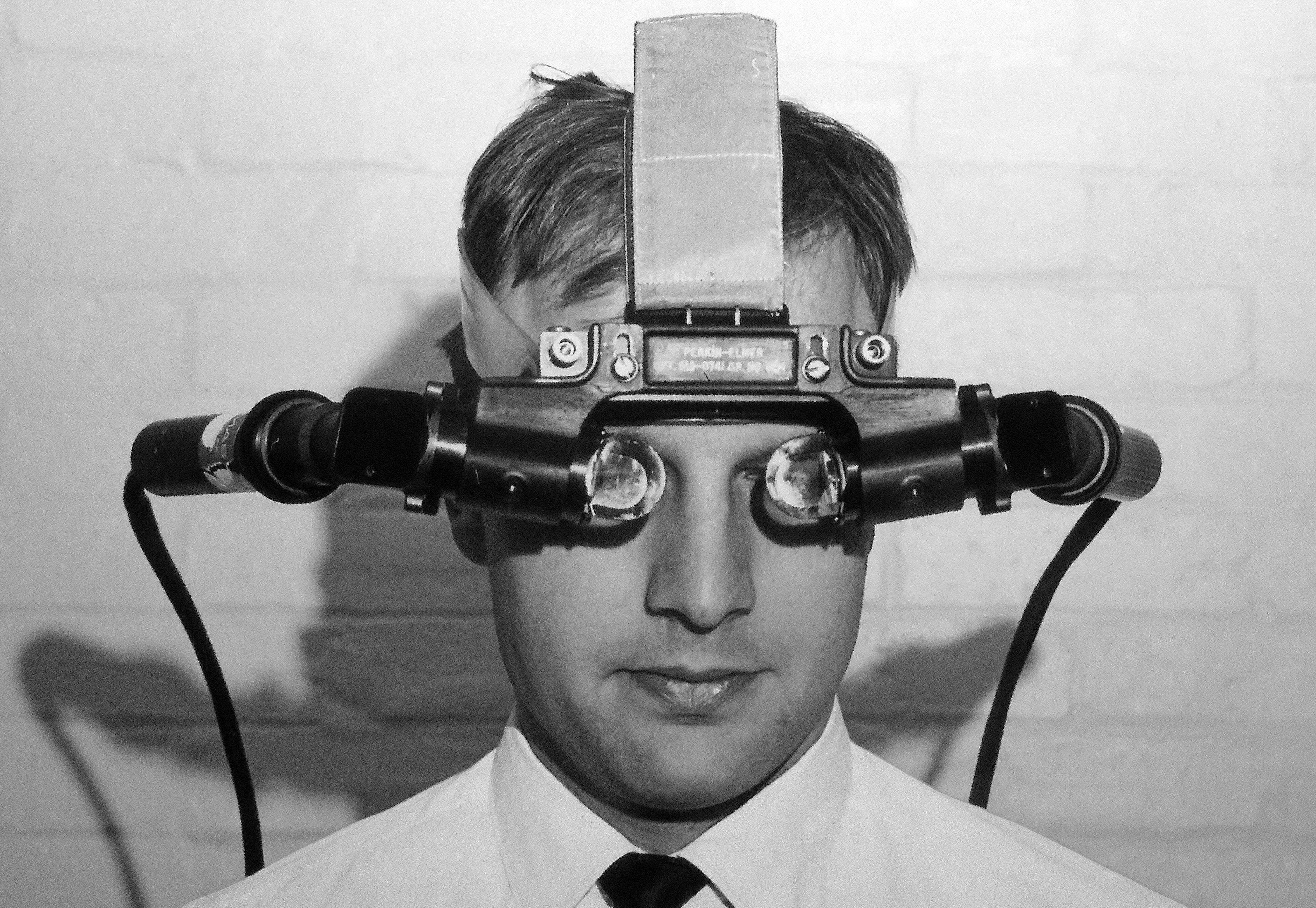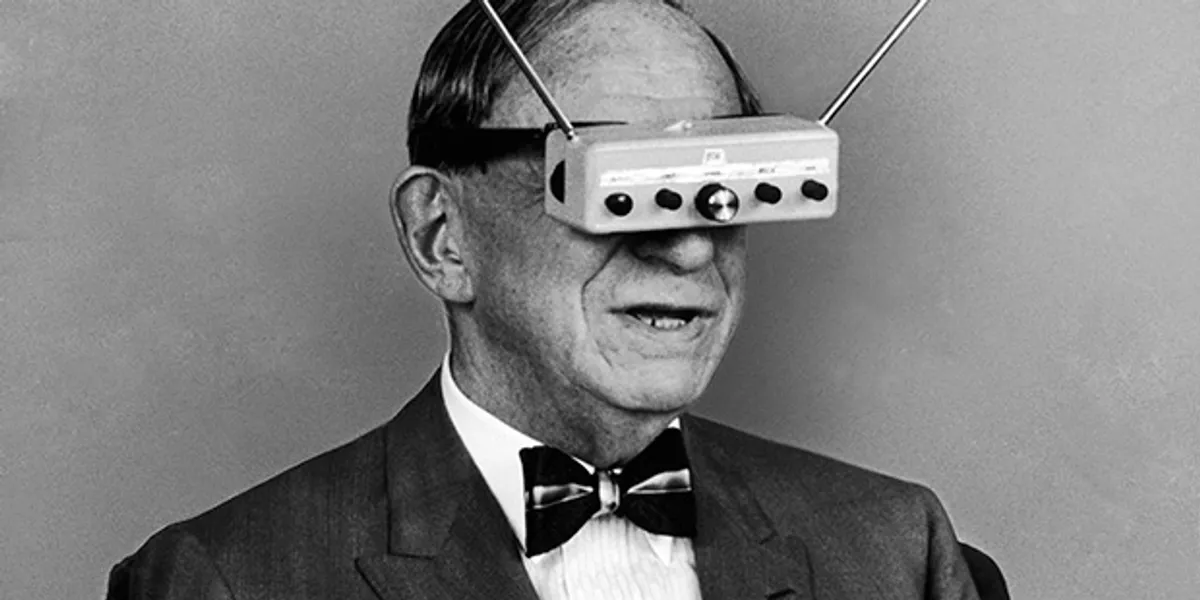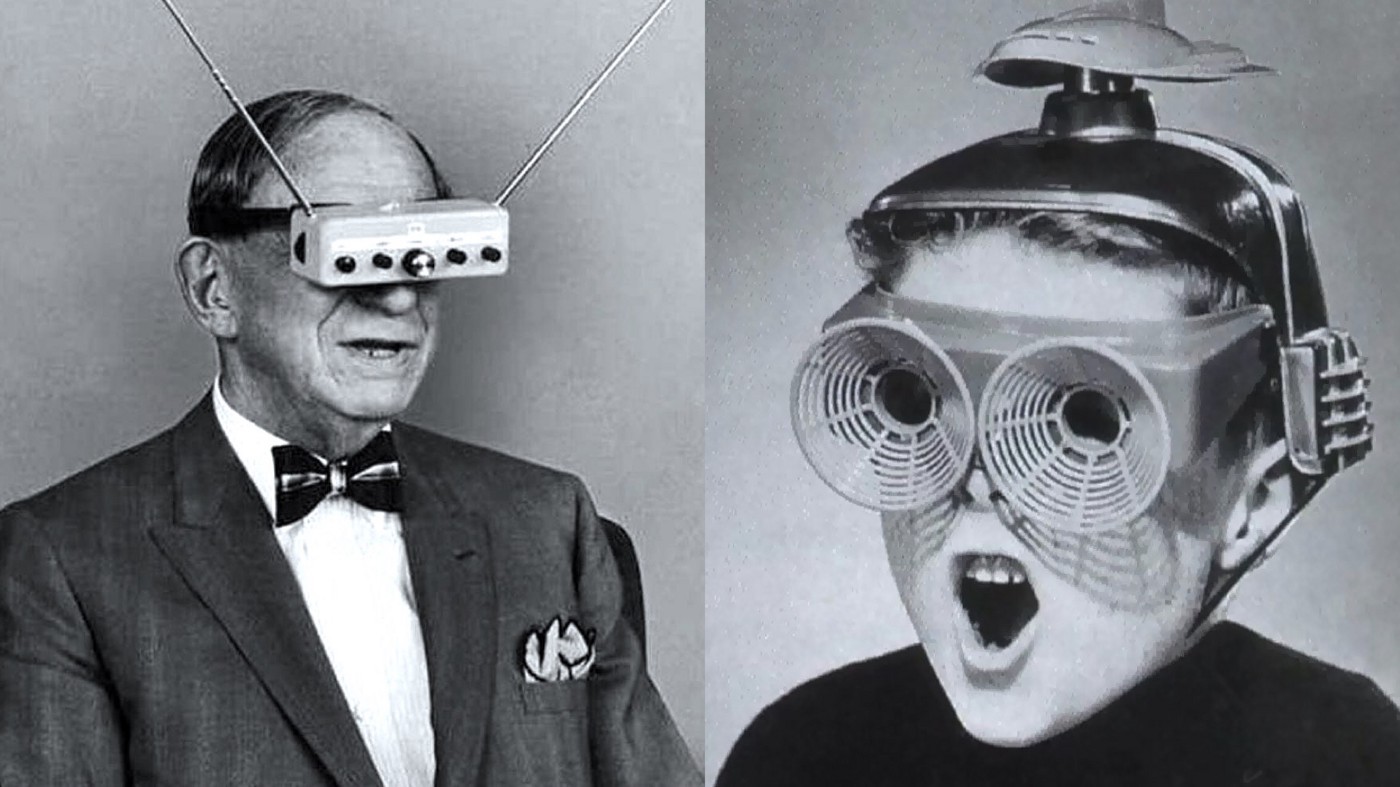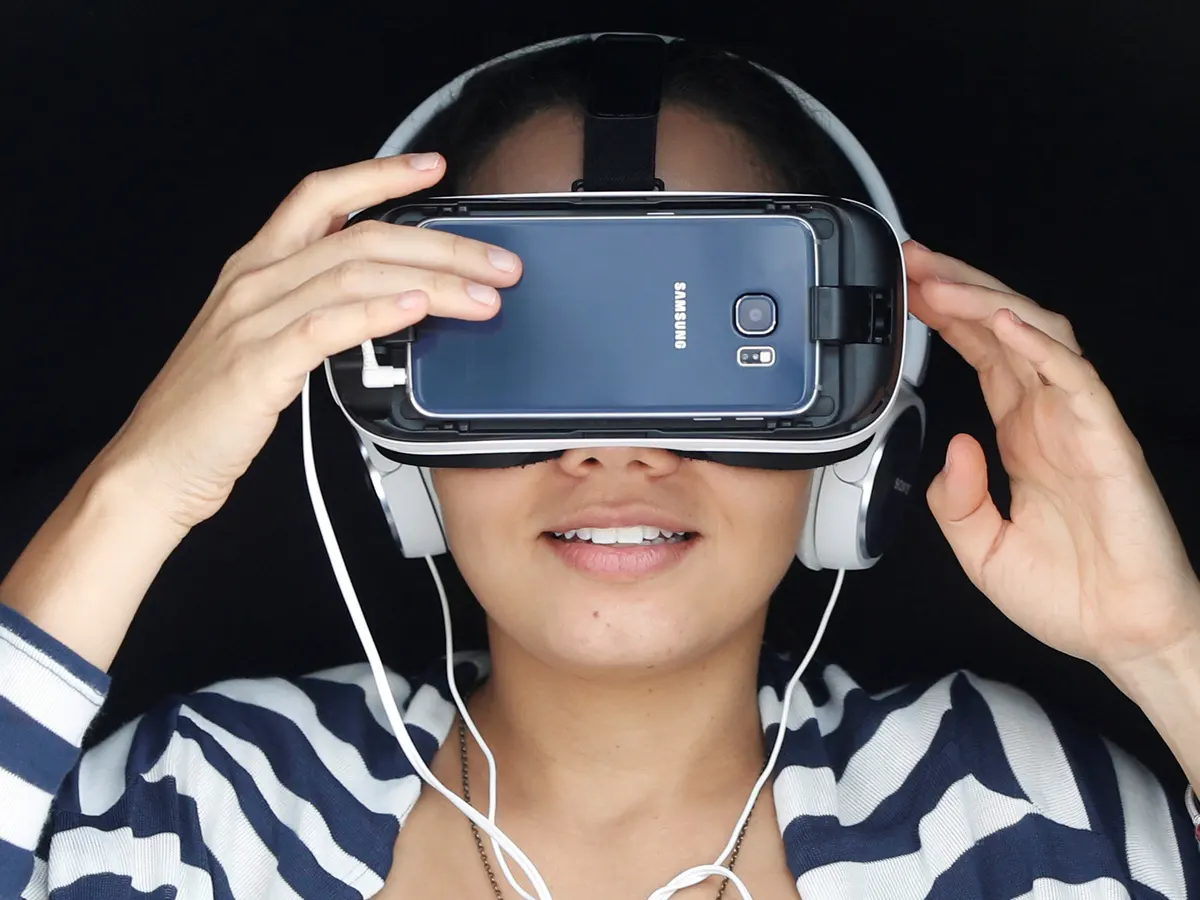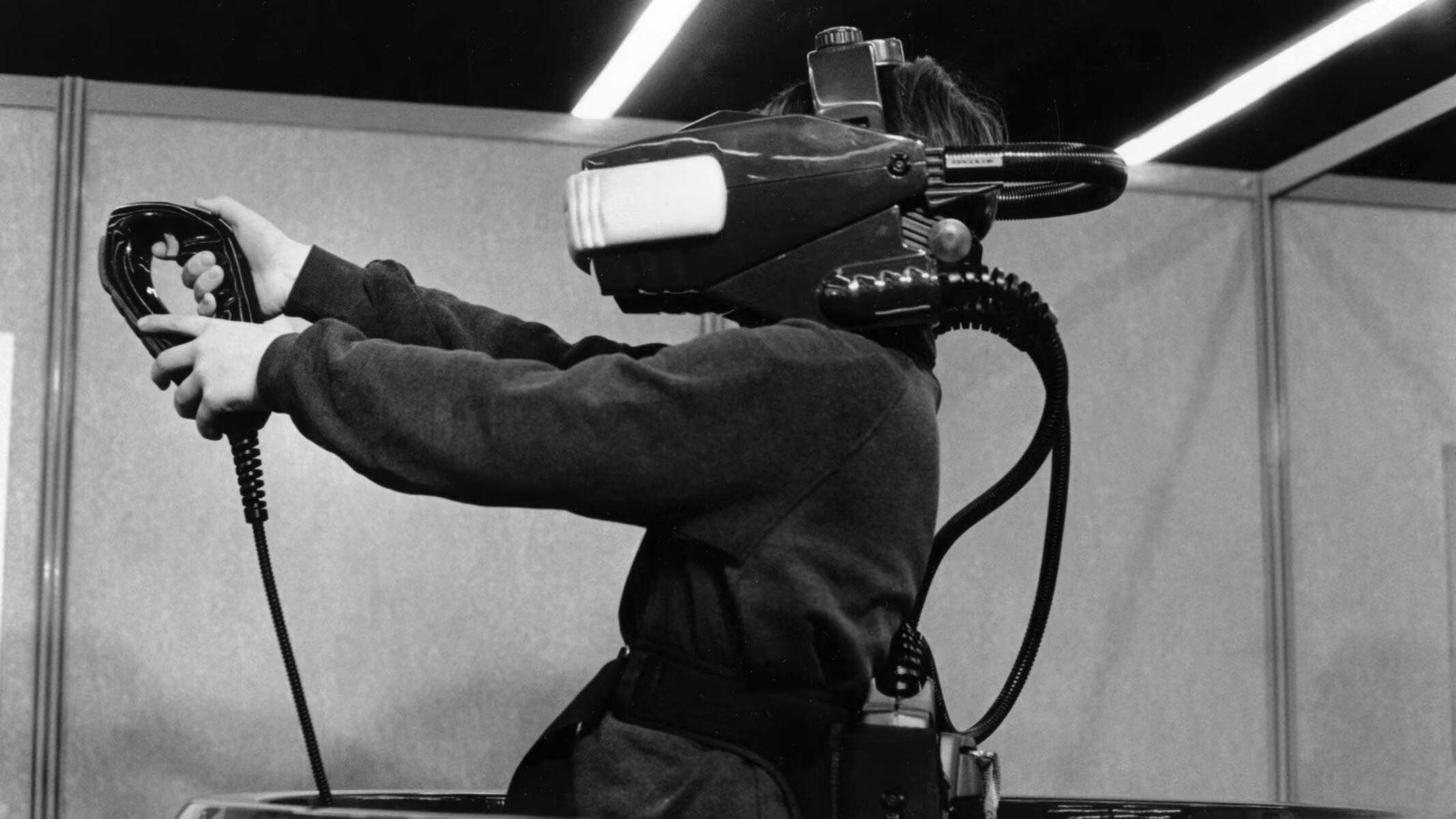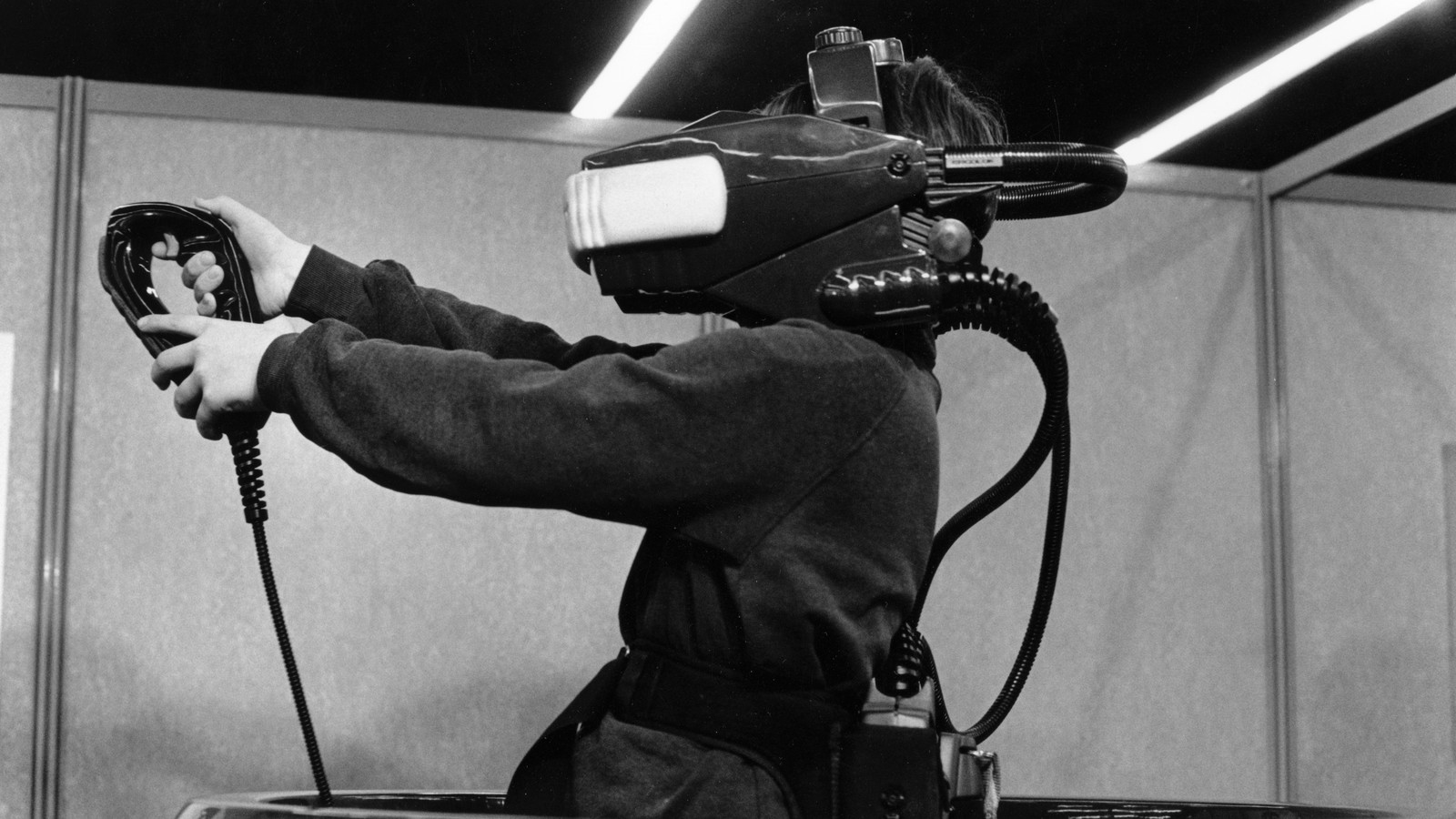Introduction
Virtual reality (VR) is a cutting-edge technology that has captured the imaginations of people worldwide. It offers users the ability to immerse themselves in a digital world, experiencing sights, sounds, and interactions that feel incredibly real. From gaming to training simulations to virtual tours, VR has found applications in various industries.
But who invented virtual reality? The answer to this question is not as straightforward as you might think. VR has a rich history, with multiple visionaries and inventors contributing to its development over the years. In this article, we will explore the early origins of virtual reality and delve into the key figures who played pivotal roles in its invention and evolution.
By understanding the origins of virtual reality, we can appreciate the advancements made in this field and the contributions of the passionate individuals who paved the way for the immersive experiences we enjoy today.
Let’s embark on a journey through time and discover the fascinating story behind the creation of virtual reality.
Early Origins of Virtual Reality
The concept of virtual reality can be traced back to as early as the 19th century when inventors and visionaries began exploring the idea of creating simulated environments. One of the earliest pioneers in this field was Sir Charles Wheatstone, who invented the stereoscope in 1838. Although not strictly virtual reality as we know it today, the stereoscope provided a means to view two-dimensional images in a way that gave the illusion of depth and immersion.
Fast forward to the mid-20th century, and we see the development of technologies that laid the foundation for virtual reality. In the 1950s, cinematographer Morton Heilig created the Sensorama, a mechanical device that provided an immersive experience by combining visuals, sounds, vibrations, and even scents. While the Sensorama didn’t achieve widespread adoption, it demonstrated the potential for creating immersive environments.
In the 1960s, computer scientist Ivan Sutherland introduced the world to the concept of head-mounted displays (HMDs) with his invention, the Sword of Damocles. This device, though primitive by today’s standards, featured a bulky headset that projected simple wireframe graphics onto the user’s field of view. Despite its limitations, the Sword of Damocles marked a significant milestone in the development of HMDs and virtual reality.
The 1970s and 1980s saw further advancements in virtual reality technology. Jaron Lanier, often referred to as the “father of virtual reality,” popularized the term itself. Lanier founded VPL Research and developed the DataGlove and EyePhone, which allowed users to interact with virtual environments through hand and eye movements.
Another key figure during this era was Thomas Furness, a researcher at the United States Air Force. Furness pioneered the use of VR in military training and flight simulators, recognizing its potential to enhance training effectiveness and reduce costs.
Throughout these early years, virtual reality technology was predominantly used for research and specialized applications. It wasn’t until the 2010s that virtual reality gained mainstream attention with the entry of Palmer Luckey and his company Oculus VR. The release of the Oculus Rift, a high-quality, consumer-grade VR headset, revolutionized the industry and sparked a renewed interest in virtual reality.
From its humble beginnings to the present day, virtual reality has come a long way. The pioneers and inventors of the past have laid the groundwork for the immersive experiences we enjoy today, pushing the boundaries of what is possible and inspiring future innovations.
Morton Heilig’s Sensorama
In the 1950s, filmmaker and inventor Morton Heilig introduced the world to the Sensorama, a mechanical device that is considered one of the earliest precursors to virtual reality. Heilig envisioned the Sensorama as a multi-sensory experience that would transport users into a virtual world.
The Sensorama consisted of a large, box-like apparatus that users would sit in front of. It included a stereoscopic display for 3D visuals, speakers for audio, a vibrating seat, and even scent emitters to enhance the immersive experience. Users could don a pair of headphones to further immerse themselves in the virtual world.
The Sensorama offered a variety of virtual experiences, ranging from motorcycle rides through city streets to helicopter flights over scenic landscapes. The device utilized stereoscopic images projected onto a screen and synchronized them with corresponding sounds and vibrations.
Heilig’s goal with the Sensorama was to create a technology that would engage all the senses and provide a complete sensory experience. He believed that such an immersive experience could revolutionize entertainment and storytelling.
While the Sensorama was ahead of its time, it failed to gain widespread commercial success. Heilig was only able to build a prototype of the device and showcase it in a few locations, limiting its exposure. Additionally, the manufacturing costs and the lack of advanced computing power to support the technology proved to be significant challenges.
Despite its limited success, the Sensorama played a crucial role in demonstrating the possibilities of virtual reality. It showcased the potential for creating immersive experiences that went beyond simple video or audio presentations. Heilig laid the groundwork for future developers and inventors to build upon and refine his vision.
Today, we can see the influence of the Sensorama in modern virtual reality systems. The concept of incorporating multiple senses into the virtual experience is a hallmark of VR technology. Headsets like the Oculus Rift and HTC Vive combine high-quality visuals and spatial audio to create a more immersive and engaging user experience.
Morton Heilig’s Sensorama was an important step in the evolution of virtual reality. It laid the foundation for future advancements that would eventually bring VR into the mainstream. While the Sensorama may have been ahead of its time, its influence is undeniable, and its pioneering spirit lives on in the virtual reality experiences we enjoy today.
Ivan Sutherland’s Sword of Damocles
In the 1960s, computer scientist Ivan Sutherland made a significant contribution to the development of virtual reality with his invention known as the Sword of Damocles. This device marked a significant milestone in the evolution of head-mounted displays (HMDs) and showcased the potential for immersive virtual experiences.
The Sword of Damocles was far from the sleek and compact VR headsets we see today. It consisted of a heavy, ceiling-mounted apparatus that the user would wear on their head. The device housed a small display that projected simple wireframe graphics onto the user’s field of view.
While the graphics were basic by today’s standards, the Sword of Damocles represented a breakthrough in virtual reality technology. It introduced the concept of head-tracking, where the user’s head movements would be tracked and used to update the displayed visuals accordingly. This allowed for a more immersive experience as the user could look around the virtual environment.
One of the key challenges in developing the Sword of Damocles was the limited computing power available at the time. The device required significant computational resources to generate and update the visuals in real-time, which posed technical constraints. Nevertheless, Sutherland’s invention showcased the potential of immersive virtual environments and set the stage for future developments in HMD technology.
Although the Sword of Damocles was primarily a research prototype and not a commercial product, it paved the way for subsequent advancements in the field of virtual reality. The concept of head-mounted displays and the idea of tracking head movements to provide an interactive virtual experience became integral to the development of VR technology.
Today, we can see the influence of Ivan Sutherland’s work in modern VR headsets, such as the Oculus Rift and HTC Vive, which have refined and improved upon his initial design. These devices incorporate high-resolution displays, motion tracking sensors, and advanced graphics processing units to create highly immersive and realistic virtual experiences.
Sutherland’s Sword of Damocles demonstrated the potential for virtual reality technology, pushing the boundaries of what was possible at the time. It paved the way for further innovation in HMDs and inspired future researchers and developers to continue refining and expanding upon his groundbreaking work.
The Birth of the Head-Mounted Display
The concept of the head-mounted display (HMD) has been instrumental in the development of virtual reality, providing users with the ability to immerse themselves in virtual environments. The birth of the HMD can be traced back to the pioneering work of Ivan Sutherland, but it was in the following years that significant advancements were made.
During the 1980s, researchers and inventors began to explore and refine the concept of the HMD. Companies like VPL Research, founded by Jaron Lanier, played a pivotal role in these developments. VPL Research introduced devices such as the EyePhone and DataGlove, allowing users to see and interact with virtual environments.
The EyePhone, an HMD with a small display placed in front of each eye, showcased the potential of immersive visuals in creating virtual reality experiences. By presenting independent images to each eye, the EyePhone created a stereoscopic effect, enhancing depth perception and further immersing the user in the virtual world.
The DataGlove, on the other hand, allowed users to interact with virtual objects by tracking the movements of their hands. This device used sensors and flex cables to detect the user’s fingers’ positions and gestures, translating them into digital input in the virtual environment.
As technology advanced, smaller and more lightweight HMDs entered the scene. In the 1990s, the Virtual Research V8 and the Forte VFX1 HMDs were introduced, offering improved visual and ergonomic features. These HMDs featured higher-resolution displays, wider fields of view, and better tracking systems, enhancing the overall immersive experience for users.
Despite the advancements in HMD technology, the cost and limited availability of virtual reality systems hindered its widespread adoption during this time. Virtual reality remained largely confined to academic and research settings, with applications in areas such as scientific visualization, engineering, and military training.
However, the birth of the HMD laid the groundwork for future developments and paved the way for more accessible and consumer-friendly virtual reality experiences. Today, we see the culmination of these advancements in HMD technology with devices such as the Oculus Rift, HTC Vive, and PlayStation VR.
These modern HMDs offer high-resolution displays, precise motion tracking, and ergonomic designs, delivering highly immersive virtual reality experiences to a wider audience. The development and refinement of the HMD have been instrumental in making virtual reality more engaging and accessible, driving the growth of the VR industry.
The birth of the HMD was a critical milestone in the history of virtual reality. It brought us closer to the vision of immersive digital experiences, allowing users to step into virtual worlds and interact with them in ways previously unimaginable. The ongoing advancements in HMD technology continue to push the boundaries of what is possible, promising an even more exciting future for virtual reality.
Jaron Lanier and the Term “Virtual Reality”
When discussing the history of virtual reality, it is impossible to overlook the contributions of Jaron Lanier, a computer scientist and musician who is often credited with popularizing the term “virtual reality.” Lanier, often referred to as the “father of virtual reality,” played a crucial role in shaping the perception and understanding of this groundbreaking technology.
In the 1980s, Lanier founded VPL Research, a company dedicated to developing and commercializing virtual reality technologies. It was during his time at VPL Research that Lanier coined the term “virtual reality” to describe immersive experiences created through computer-generated environments.
Lanier believed that virtual reality offered a new paradigm for human-computer interaction, where users could enter and interact with digital spaces. He envisioned a world where individuals could experience anything from virtual art installations to shared virtual workplaces.
Under Lanier’s direction, VPL Research developed key virtual reality devices like the EyePhone and DataGlove. These devices allowed users to see and interact within virtual environments, paving the way for the immersive experiences we enjoy today.
Lanier’s work went beyond the technical aspects of virtual reality. He recognized the potential social and cultural impact of the technology. In his book, “Virtual Reality: The Revolutionary Technology of Computer-Generated Artificial Worlds,” he explored the ethical considerations and possibilities for societal transformation that virtual reality presented.
Lanier’s efforts to popularize virtual reality, coupled with his visionary ideas, garnered widespread attention and influenced the perception of this emerging technology. The term “virtual reality” became increasingly associated with immersive digital experiences, capturing the imagination of researchers, developers, and the general public.
Although VPL Research eventually closed its doors, its legacy, and Lanier’s influence, lived on. Virtual reality continued to evolve, propelled by the pioneering work of numerous companies and individuals who built upon Lanier’s foundations.
Today, the term “virtual reality” has become a household name, synonymous with immersive digital experiences. It has found applications in entertainment, gaming, healthcare, training, and other industries. The once futuristic concept introduced by Jaron Lanier is now a tangible and transformative technology that has the power to shape the way we interact with the digital world.
Jaron Lanier’s contributions to virtual reality extend beyond his role in popularizing the term. His creative vision, technical expertise, and thought-provoking ideas laid the groundwork for a technology that continues to push boundaries and offer exciting possibilities for the future.
The Contributions of Thomas Furness
When discussing the history of virtual reality, it is impossible to overlook the contributions of Thomas Furness, a pioneer in the field. Known as the “grandfather of virtual reality,” Furness has made significant advancements in virtual reality technology and its applications.
During the 1960s, Furness began his career as a researcher for the United States Air Force. He recognized the potential of virtual reality in military training and flight simulation and made it his mission to develop practical applications for the technology. His research and innovations have helped shape the modern landscape of virtual reality.
Furness is credited with developing the first flight simulator capable of providing pilots with a fully immersive virtual training experience. His pioneering work in flight simulation led to the creation of the “Super Cockpit,” an advanced simulator that provided realistic visuals, motion feedback, and integrated audio.
One of Furness’ notable inventions is the Virtual Retinal Display (VRD), a technology that projects images directly onto the retina of the viewer’s eye. This innovation significantly improved the visual experience of virtual reality, delivering high-resolution images without the need for traditional displays.
In addition to his technical contributions, Furness has played a pivotal role in the growth and development of the virtual reality community. He founded the Human Interface Technology Laboratory (HITLab) at the University of Washington, which became a leading center for research and innovation in virtual and augmented reality technologies.
Furness has also been dedicated to mentoring and inspiring future generations of virtual reality enthusiasts. He has taught courses at the University of Washington and has been instrumental in fostering collaboration and knowledge exchange within the VR community.
Today, the impact of Thomas Furness’ contributions can be seen in various industries where virtual reality is applied. The use of VR in flight simulation, military training, healthcare, and education owes a debt to his early groundbreaking work.
Furness’ vision and dedication have left an indelible mark on the field of virtual reality. His research, technological advancements, and commitment to advancing the capabilities of this technology have propelled it into the mainstream. The immersive experiences we enjoy today owe a great deal to the contributions of Thomas Furness, the “grandfather of virtual reality.”
The Impact of Palmer Luckey and Oculus Rift
In recent years, virtual reality has experienced a resurgence in popularity, and much of that can be attributed to Palmer Luckey and the launch of the Oculus Rift. Luckey, a young innovator and entrepreneur, brought virtual reality back into the spotlight and revolutionized the industry.
In 2012, Luckey introduced the world to the Oculus Rift, a consumer-grade virtual reality headset. The Oculus Rift quickly garnered attention and generated a tremendous amount of excitement within the gaming and technology communities. It was hailed as a significant leap forward in virtual reality, offering high-quality visuals, immersive sound, and intuitive controls.
One of the key aspects of the Oculus Rift’s impact was its focus on accessibility. Luckey and the team at Oculus VR made a concerted effort to make virtual reality more affordable and widely available to consumers. Prior to the Oculus Rift, virtual reality systems were prohibitively expensive and mainly limited to research and industrial applications.
The release of the Oculus Rift sparked a new wave of interest in virtual reality, leading to increased investment, research, and development in the field. The gaming industry, in particular, experienced a significant transformation as virtual reality became a viable and compelling gaming platform.
The success of the Oculus Rift also caught the attention of major tech companies, leading to its acquisition by Facebook in 2014. This acquisition infused Oculus VR with the necessary resources to accelerate research, improve hardware, and expand its reach in the market.
As a result of the Oculus Rift’s impact, numerous other virtual reality headsets were developed and released by competing companies, further driving innovation and market growth. The Oculus Rift paved the way for the virtual reality industry to flourish, attracting developers, content creators, and consumers alike.
Today, virtual reality has expanded beyond gaming and entertainment applications. It has found use in areas such as healthcare, education, architecture, and training, among others. The accessibility and advancements brought about by the Oculus Rift have fueled the growth of practical and meaningful applications for virtual reality technology.
Palmer Luckey’s vision and determination to make virtual reality accessible to everyone have had a profound impact on the industry. The success of the Oculus Rift has been instrumental in popularizing virtual reality and bringing it into the mainstream consciousness. Luckey’s contributions have not only revolutionized gaming but have also ignited a broader revolution in how we interact with and experience digital content.
The impact of Palmer Luckey and the Oculus Rift cannot be overstated. Their pioneering efforts have transformed virtual reality from a niche technology into a dynamic and thriving industry with infinite possibilities for the future.
Conclusion
The history of virtual reality is a fascinating journey that spans decades and involves the contributions of numerous pioneers and visionaries. From the early origins of virtual reality with the inventions of the Stereoscope and the Sensorama, to the groundbreaking work of Ivan Sutherland and Jaron Lanier, and the game-changing innovations of Thomas Furness and Palmer Luckey, each individual has played a vital role in shaping the evolution of this technology.
Virtual reality has come a long way from its experimental beginnings to becoming a tangible and transformative technology that has found applications in various industries. The advancements in head-mounted displays, motion tracking, and immersive audiovisual experiences have propelled VR into the mainstream, making it more accessible than ever before.
The contributions of these pioneers have not only pushed the boundaries of what is possible in virtual reality but have also inspired and influenced generations of researchers, developers, and enthusiasts. Their passion, creativity, and relentless pursuit of innovation have laid a solid foundation for the future of virtual reality.
As technology continues to advance, virtual reality holds tremendous promise for the future. It has the potential to transform industries, revolutionize entertainment, and reshape the way we learn, collaborate, and experience the world around us.
With ongoing developments in hardware, software, and content creation, virtual reality is poised to become an integral part of our daily lives. Exciting possibilities lie ahead as the boundaries between the physical and digital worlds blur, fostering new ways of communication, exploration, and interaction.
As we reflect on the history and advancements of virtual reality, we are reminded of the power of human ingenuity and our endless pursuit of pushing the boundaries of technology. The journey of virtual reality is far from over. It is an ever-evolving field driven by the passion and creativity of individuals who push the limits of what is possible.
So, let us embrace the future of virtual reality with enthusiasm and anticipation, knowing that we stand on the shoulders of the visionaries who have brought us this far. Their contributions have ignited a revolution, and the future of virtual reality holds infinite possibilities for the world we live in.







